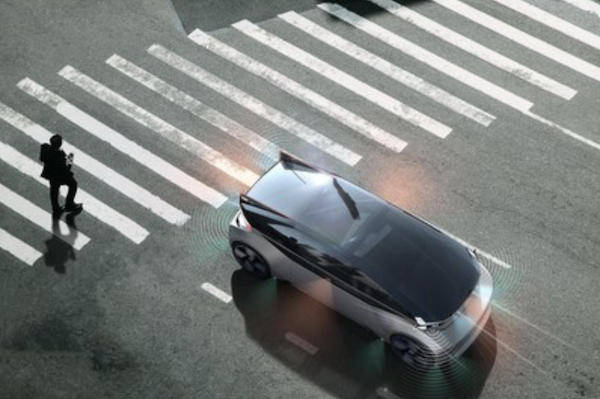
Volvo suggests they can make self-driving cars safer by giving them a type of body language featuring lights and sounds.
In a future where autonomous vehicles regularly share the road with pedestrians, cyclists and other vehicles, Volvo noted it was vital that driverless cars find a way to communicate their intentions to improve road safety.
“What we’re really after is to give the self-driving car a type of body language that everyone understands,” Mikael Ljung Aust, senior technical leader for collision avoidance functions at the Volvo Cars Safety Center, said in a statement.
One basic example of what Volvo means is the backup warning beep that trucks emit in reverse gear.
“What we really need is three or four key sounds that tell you what the car is going to do,” Ljung Aust said. “One of these sounds is informing the driver or the pedestrians around the car what its intentions are, for example: ‘I do not intend to move.’ For this, we use a low frequency sound, one we as humans naturally associate with something big. It’s a pulse, oscillating very slowly, which indicates the car is standing still.”
Other possible audio includes acceleration and decelerations sounds. These consist of a soft ticking that gradually increases and decreases in frequency respectively.
For a sound that warns a pedestrian of an oncoming car, Volvo was inspired by submarines. The goal is to use ultrasound to “ping” pedestrians and cyclists with a noise only they can hear, similar to a submarine’s sonar.
Volvo noted sound cues were most effective when partnered with visual displays. As such, the company is exploring a light band wrapped around the sides of Volvo’s 360c autonomous concept car, which lights up to alert other road users that they have been detected and considered by its safety systems. The same light band synchronizes with the car’s sounds to communicate its intentions.
“There is an almost behavioral or ancestral reflex in people that make them jump or at least alert themselves if things happen in two channels at the same time,” says Ljung Aust. “Thunder and lightning is an easy example.”
Photo courtesy Volvo Cars.

